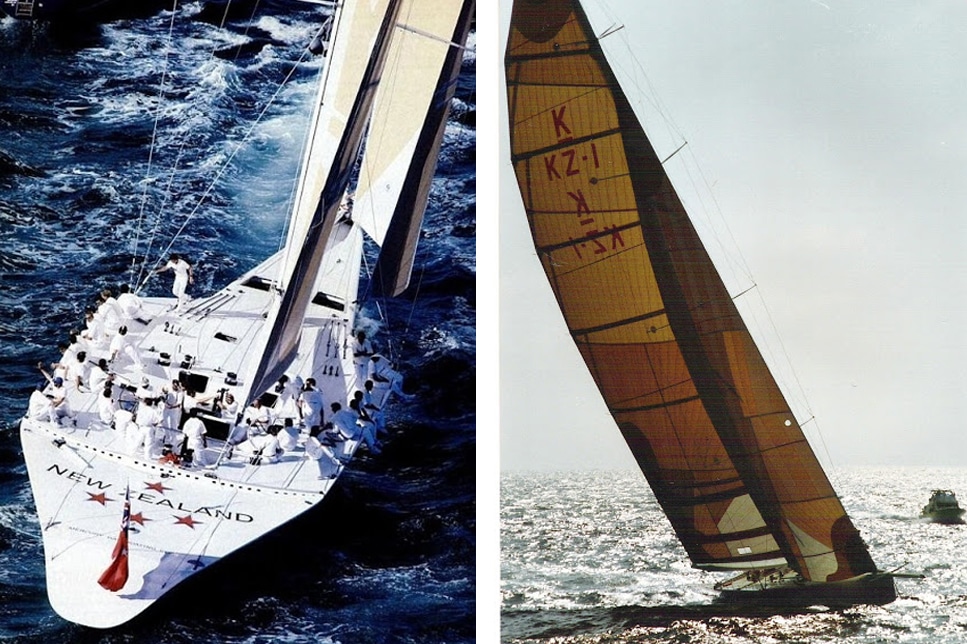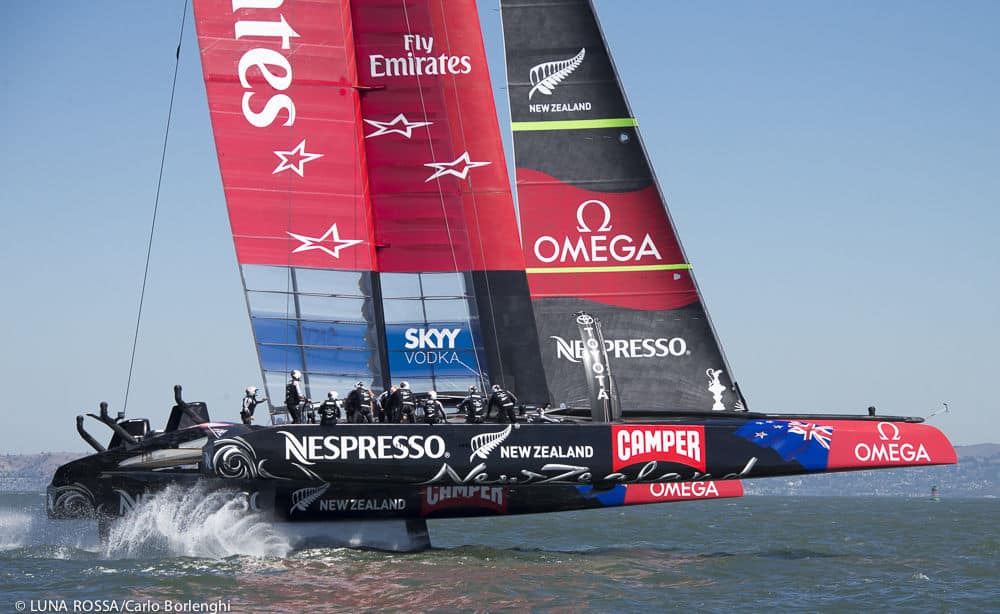The first of our round two showdowns pits the massive 100-foot New Zealand of the 1988 Mercury Bay Challenge against the first foilers in the America’s Cup, the giant, flying AC 72s.
Who is your favorite?
KZ-1 New Zeland

In 1988, one of the most infamous showdowns in America’s Cup history took place. After Dennis Conner won back the cup in 1987, New Zealander Michael Fy launched a challenge against the US. The battle came down to two wildly different designs, a massive 90-foot monohull sailed by the Kiwis, and the first foray into the word of catamarans, the American Stars & Stripes.
Michael Fay’s challenge against San Diego Yacht Club brought back the original rules of the Deed of Gift, a surprise to the American’s who intended to keep the cup in 12-metres. The New Zealand entry, dubbed the “Big Boat” weighed in at 39 tons, 120 feet over all, and boasted a 90 foot waterline, the largest waterline allowed by the original deed. The unusual carbon fiber design was a far cry from the 12 meters that the cup sailors were used to.
The challenge would be skippered by David Barnes with a massive crew of 40 sailors from the Mercury Bay Boating Club in New Zealand. The Big Boat, while fast, would face a shorter battle on the water than off after facing down the American entry.
vs.
AC72

For the 34th America’s Cup, yet another new class of boat was introduced that would help shape the event into what we are watching in Bermuda today. The AC72 was to be a wing-sailed catamaran, drawing inspiration from the 32nd Cup, a series of preliminary events around the world venues leadup to the actual event, sailed in AC45s, smaller one-design versions of the AC72s.
The AC72 drew controversy as the official challenger, Club Nautico di Roma withdrew from the competition, citing challenges in raising sufficient funds to field a competitive team. A second yacht club filed a challenge, the Royal Swedish Yacht Club assumed the duties of the challenger.
Rumors of hydrofoiling an AC72 floated about the cup as teams began test sailing their racing platforms. Foiling was confirmed when Emirates Team New Zealand’s AC72 yacht Aotearoa was seen sailing on hydrofoils in August, 2012. This sparked a technology race in foil development and control as the 34th Cup would be won by the team who foiled fastest and longest. The Royal New Zealand Yacht Club won the right to sail in the America’s Cup match easily beating the Italian and Swedish challengers in the Louis Vuitton Cup. The resulting match between the USA and NZ was the longest on record, with Oracle Team USA staging an epic come-from-behind victory, winning eight straight races to defend the cup and beat New Zealand 9–8.









